What causes some learners to struggle more than others?
How do we help every young person become a better learner?
This ‘really useful’ resource helps schools and teachers to;
- understand more about your students as learners as COVID wanes
- strengthen your students’ learning behaviours in order to impact on their performance
- focus any ‘catch-up’ training more precisely making sure it takes advantage of strong learning habits
- show valid evidence of students’ growth in learning behaviours
- narrow and, of course, evidence the learning gaps for specific target groups e.g. disadvantaged and looked after children (Pupil Premium)
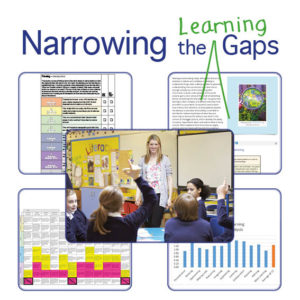
As schools get back on track after the massive disruption caused by the COVID pandemic this resource;
- will help reinvigorate teachers use of learning power, where this may have waned in the pandemic
- offers a swift, focused start for schools that are sympathetic to the aims of BLP, but have no previous experience
- provides effective tools for schools familiar with BLP but are yet to track its impact on students
- offers the tools for focusing classroom practice and gathering evidence of that practice on certain groups of students e.g. Pupil Premium students.
This resource is useful for any school that believes the becoming a better learner is an important educational outcome.
If you think better learners are likely to be better at learning particular ‘stuff’, including the stuff of conventional attainment measures, this resource will be a game changer for your school.
Using this ‘really useful’ resource means you can;
- discover and understand the learning behaviour features of a target group of students
- recognise and learn from how the learning behaviours of higher and lower attaining students may differ
- establish relevant achievement issue target groups (e.g. Pupil Premium, boys under attainment, high achieving girls)
- analyse and record target students’ current growth in learning power behaviours;
- introduce students to their learning behaviours;
- adapt your teaching to strengthen growth in learning behaviours;
- monitor and evaluate your own practice and the subsequent growth in target group students’ learning behaviours.
A resource that tells it like a story
The resource lays out, in story form, a highly practical introduction to how teachers and schools might tackle some of the post pandemic questions around students’ performance. It’s based around two main pieces of content:
- a set of tools — ‘Learning Charts’ — for evaluating an individual student’s learning behaviours; and
- an extensive ‘Catalogue of Ideas’ for teachers to apply in their efforts to nurture their students’ learning behaviours.
The growth charts are powerful tools that can reveal interesting and vital information about students’ learning. They can be used to analyse classes, year groups or indeed any target group, not solely pupil premium students.
The Catalogue of Ideas exemplify learning powered classroom practice, recognising that a way to measure an interesting impact is much more useful if there are also ways available to generate a positive impact over time.
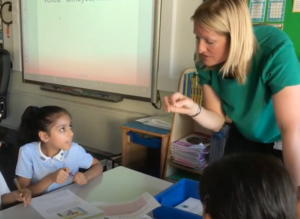
a. A FREE online (electronic) booklet with links to illustrative resources.
This sample, overview edition is freely available, and cost-free. It includes only a small part of the Catalogue: just one section, Noticing, out of the twelve. The downloads of the Learning Behaviour Charts are more limited than in the full edition. However, this booklet shows the whole process in story form and, as such offers a swift introduction to the nature and potential of building students’ learning power.
View FREE online (electronic) booklet [pdf]b. Complete online learning resource
The full version of the online resource follows the same structure as the booklet, with additional features of interest and swift access to the full set of resources.
Twelve Learning Behaviour Tables
A straightforward layout mapping the phases of growth for each learning behaviour.
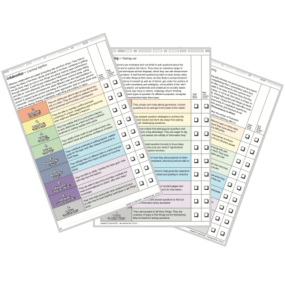
Two full Learning Behaviour Charts (colour and b/w)
Holistic charts showing the growth phases of 12 learning behaviours. Completing this tool reveals the learning behaviour profile of any student.
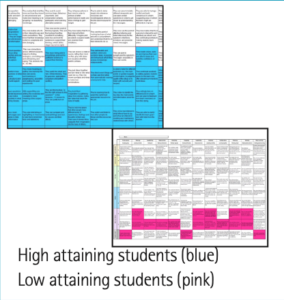
Spreadsheets designed to store and track students’ learning data
Just add your students’ names to this tailored spreadsheet to find out yet more about your students as learners.
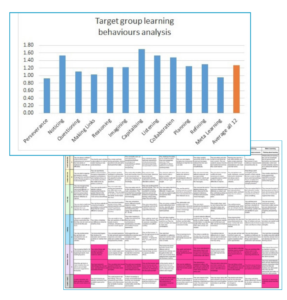
The Teaching Behaviour Chart summarising how teachers can grow their practice and achieve a learning friendly culture.
Track your own growth as a teacher and the impact this has on students
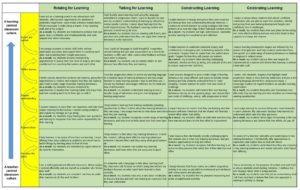
Full catalogue showing teaching ideas for 12 learning behaviours at three levels of growth…over 150 teaching ideas.
Structure a learning friendly culture around these teaching ideas, suitable for both primary and secondary classrooms.
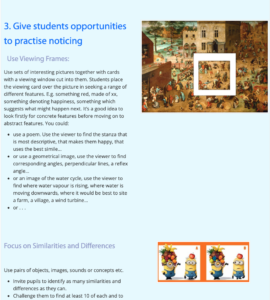
The 12 learning behaviours with teaching ideas
Persevering, Noticing, Questioning, Making links, Reasoning, Imagining, Capitalising, Listening, Collaborating, Planning, Refining, Meta-learning
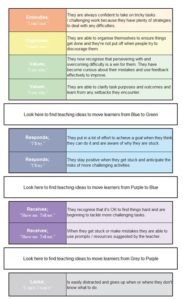
How the full online resource is structured
While TLO have many online courses for teachers to work through its important to say that this resource IS NOT A COURSE. Different sections will come into play at different times. Some teachers will need to look at all of it other teachers may only need specific bits. But wherever you are with learning power now this resource will take you further.
Take a look through the seven sections. They’re logically structured to effect real change in your student’s learning. Note they start with sections on Intent, going on to sections on how to Implement, before finally looking at the Impact.
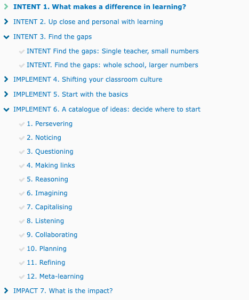
Section 1. What makes a difference in learning? (INTENT)
The first section looks briefly at the what and why of learning power. If you’re familiar with this just move on. If you are new to it this short section will give, or remind, you of its origins and principles.
Topics explored in section 1:
- Framework of high value learning behaviours
- The primacy of dispositions and the essentials of the approach
- Can we trust it? Is it evidence based?
- Why it matters
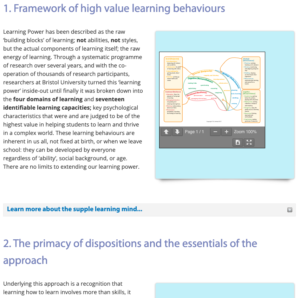
Section 2. Up close and personal with learning (INTENT)
In section 2 you’re invited think about the phases of growth in learning behaviours, firstly by looking at yourself as a learner; where your strengths are, those you find tricky; those you’d like to improve. Having got the idea we then invite you to look at just a couple of your students; a low and a high attaining student. This exploration gives you a glimpse into what contributes to the differences in how students approach and achieve in learning.
Topics explored in section 2:
- What does a ‘good learner’ look like?
- Put your toe into this learning water
- Get a sense of how learning behaviours progress
- Discover yourself as a learner
- Analyse two of your students as a learners using the profiling tool
Section 3. Find the gaps (INTENT)
In this section we explore what ‘gap’ you want/need to explore so that you help students’ to improve their learning behaviours, narrow a learning gap and raise their attainment. The two subsections deal with;
- ‘Single teacher, small numbers’ supports you to look individually at the learning profiles of your target group students.
- ‘A whole school approach, larger numbers’ helps you to aggregate the profiles and consider the group as a whole.
Topics explored in section 3 subsections:
Single teacher, small numbers
- Generate data for each student
- Generate the profiles
- Interpret your profiles
- What does this mean for how you support learners in the target group?
A whole school approach, larger numbers
- Making it manageable with larger numbers of students
- Generate the data
- From pretty charts to hard headed scores
- Record the profile scores
- Manage your own live data
- Interpret your live data

Section 4. Shifting your classroom culture (IMPLEMENT)
In this section we look at the basic steps in shifting a classroom culture to offer students more opportunities to use and cultivate their learning powers. This involves shifting all the little habits, routines and practices that implicitly convey ‘what we believe and value round here’. This involves the ways in which teachers relate to students, talk to students, organise and construct activities, as well as what they celebrate about learning.
Topics explored in section 4:
- Get curious about your own teaching
- Relating to students
- Talking with students about learning
- Constructing learning
- Celebrating learning
- Pulling it all together – the big picture of culture change
Section 5. Start with the basics (IMPLEMENT)
In this section we look at a few straightforward things teachers can do to start engaging students in developing their learning dispositions. You can’t do everything at once, but teachers have found, a few changes can have a gratifying and immediate impact on how well students learn. .
The point is to create a learning environment that supports students in extending their own learning power, not just one in which they can demonstrate their current learning power.
Topics explored in section 5:
- Plan when to introduce learning behaviours
- Develop appropriate stuck prompts together
- Rethink what you will celebrate
- Explore what you mean by challenge and effort
- Rethink real achievement in learning
- Flip the emphasis in how goals are expressed
- Explore why we are doing this…
- Use intriguing lesson starters
- Develop routines to manage thinking
- Use monitoring checklists
- Build in self-monitoring and reflection

Section 6. A catalogue of ideas: decide where to start (IMPLEMENT)
Section 6 contains a broad range of teaching ideas to help teachers focus on building students’ learning behaviours. To help things along we bring together the 12 learning behaviour progression tables – each interlinked with specific teaching ideas to enable a particular phases of progression. (grey to purple; purple to blue; blue to green)
Topics explored in section 6:
- Persevering – 2. Noticing (Preview) – 3. Questioning – 4. Making links – 5. Reasoning – 6 Imagining – 7. Capitalising – 8. Listening – 9. Collaborating – 10. Planning – 11 Refining – 12. Meta-learning
Section 7. What is the impact? (IMPACT)
It’s all very well making plans and putting them into action but what difference do they actually make; have your plans and actions worked and how well? This section invites you to consider your progress in 3 aspects – how increasing learning friendly classroom cultures are working, how students’ learning behaviours are growing, and whether this activity is narrowing the progress / attainment gap for a target group of students, notably pupil premium students.
Topics explored in section 7:
- Impact on classroom culture, using a teacher reflection tool
- Impact on student learning behaviours, using a tool to assess changes in learning behaviours
- Impact on attainment, suggesting a reflection piece to evaluate changes in progress and performance
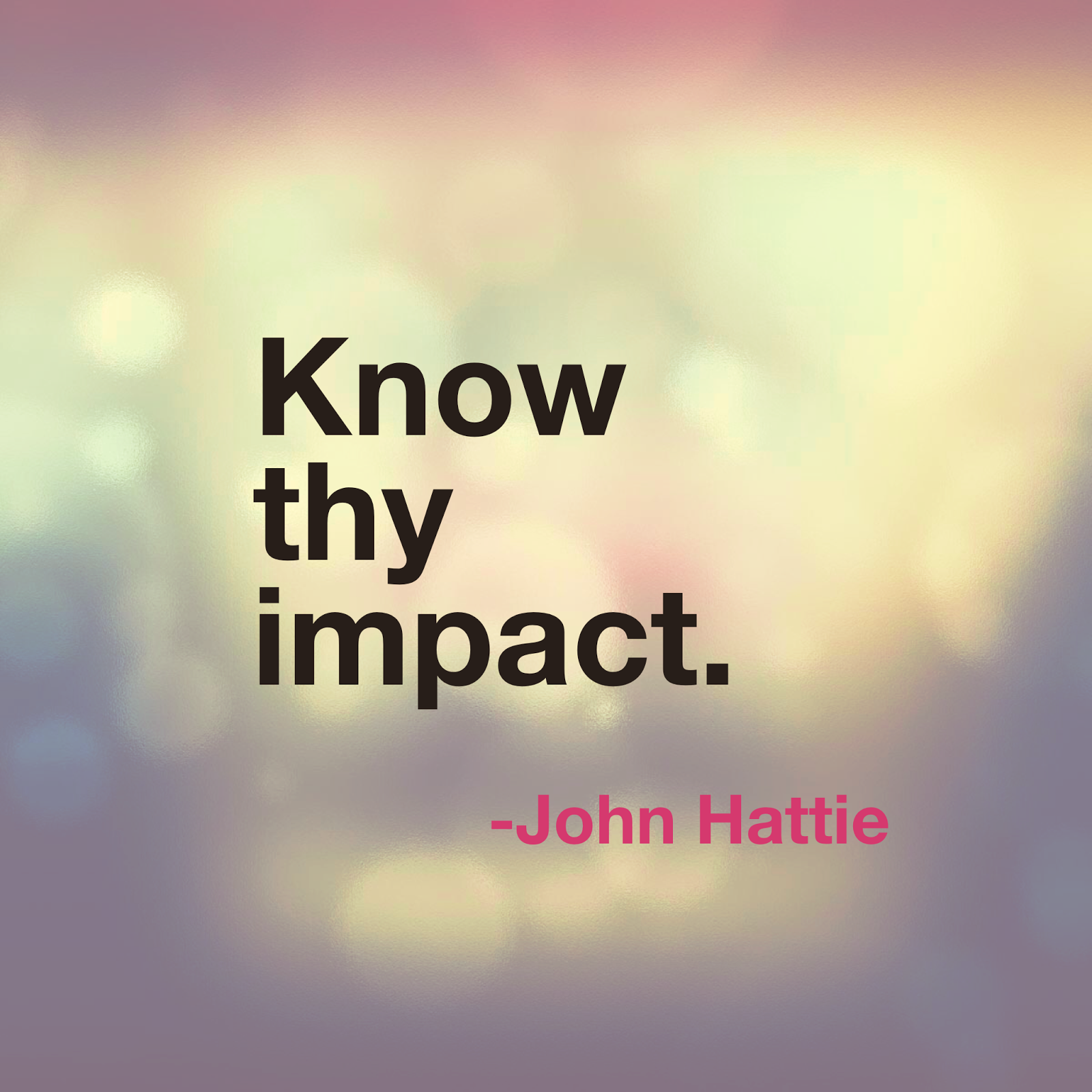
Available for purchase based on number of teaching staff. Please contact us for more information on the full edition.
Contact us about this resource

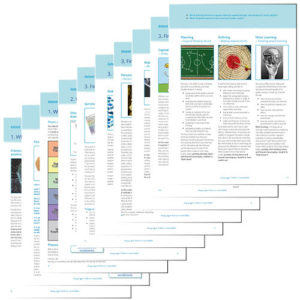
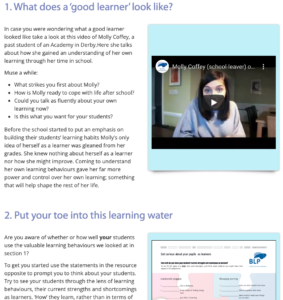
Comments are closed.